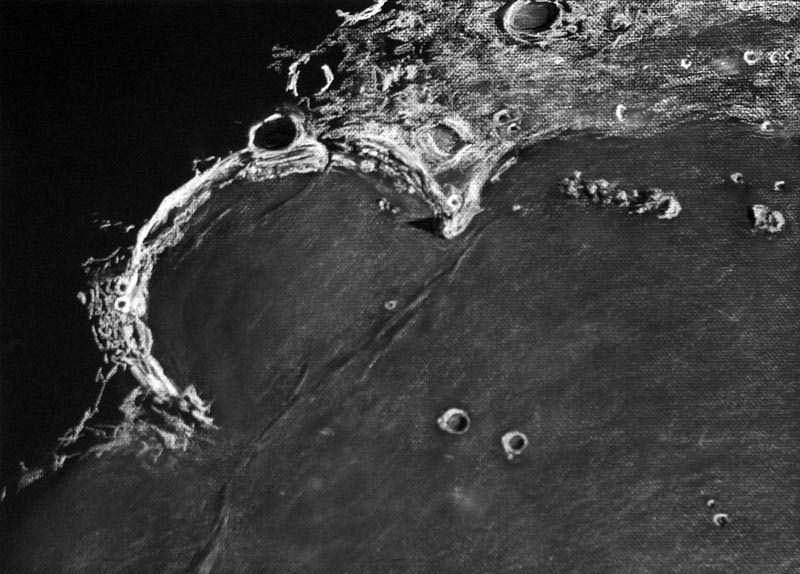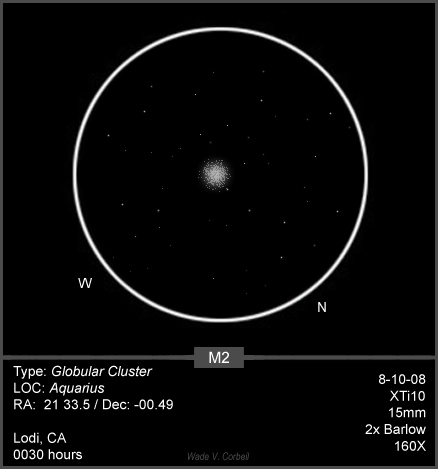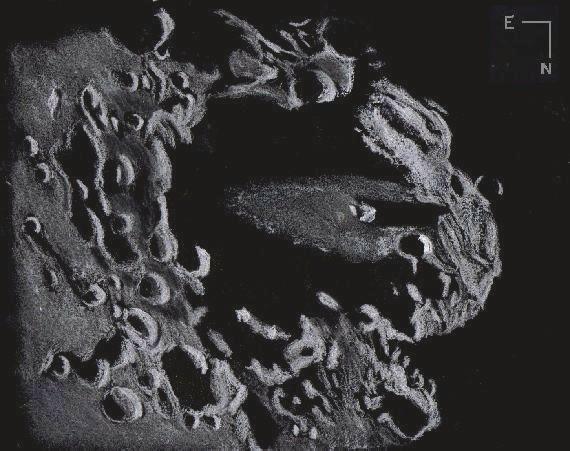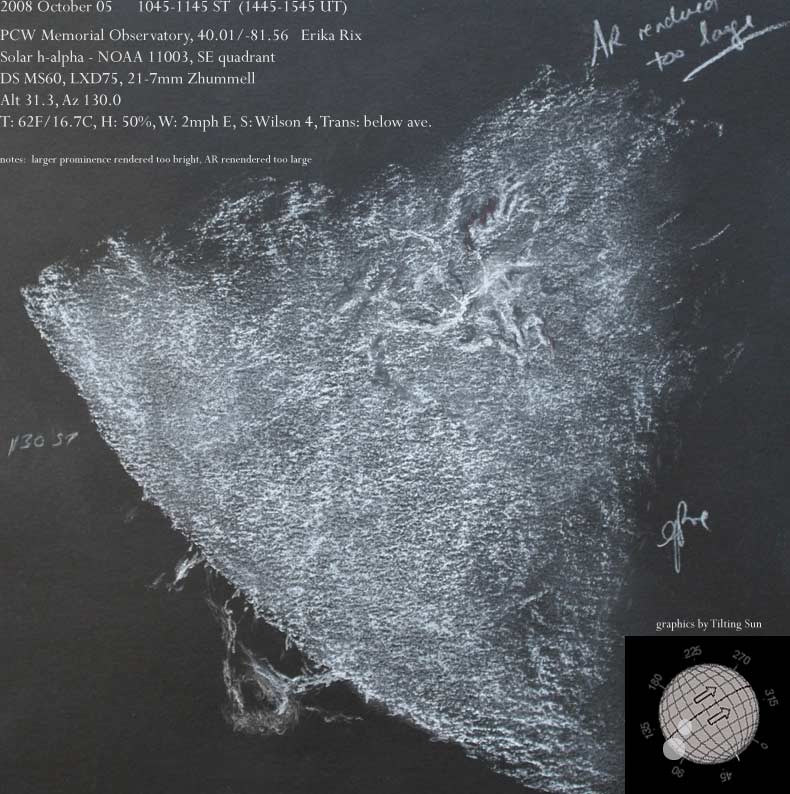Crater Mersenius
Sketch and Details by Frank McCabe
Mersenius is an 84 kilometer diameter floor fractured crater just to the west of Mare Humorum. This crater is a Nectarian period crater estimated to be 3.9 billion years old. Close examination shows it has a very noticeable convex floor which is estimated to be half a kilometer higher than the floor edge. No hint of any central peaks seemed to be visible. The floor of this crater is fractured and one of those rilles appearing as a fine bright line was in view when the seeing was at its best just a few times as I sketched. Lunar geologists suggest that the bulging floor is due to lava upwelling from basin lava (Humorum), which released molten rock through the floor fractures at the crater’s center. This may account for the burial of the central peaks and production of numerous rilles. The floor distance below the crater rim is about 2.5 kilometers. Parts of the Rimae Mersenius system stood out clearly northeast of Mersenius Other craters included in my sketch are Mersenius D to the southeast, P to the north, 34 and 42 kilometers in diameter respectively. This was a most enjoyable sketching session because of the seeing and weather conditions.
Sketching:
For this sketch I used: black Strathmore 400 Artagain paper 8”x11”, white and black Conte’ pastel pencils and a blending stump. After scanning, Brightness was decreased (-4) and contrast increased (+2) using Microsoft Office Picture Manager.
Telescope: 10 inch f/ 5.7 Dobsonian 6mm eyepieces 241x
Date: 10-12-2008, 1:00 – 2:45 UT
Temperature: 16° C (61° F)
clear, calm, humid
Seeing: Antoniadi III, II
Colongitude: 60.4 °
Lunation: 12.7 days
Illumination: 90.6 %
Frank McCabe



















